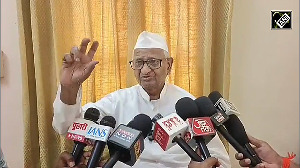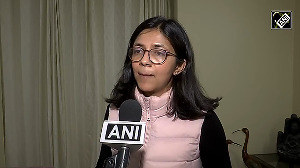The actions by the Reserve Bank of India are now critical to any hopes of turning the Indian economy around. Faced with a severe inflationary threat during the first half of the current financial year, the RBI, along with several other central banks around the world, did what the policy doctrine recommended and raised its benchmark repo rate. All this happened when the global economy was sliding into recession.
Inflation was a severe problem even as recently as July, when, in his last scheduled quarterly policy announcement, (formerRBI governor) Y V Reddy increased the repo rate by 50 basis points to 9 per cent. However, soon after that, oil prices went into a precipitous decline and the inflation threat rapidly abated, reinforced by slowing economic growth.
In October, the repo rate was first reduced and it has been steadily brought down to the current level of 5.5 per cent. More recently, the reverse repo rate, which sets an effective floor on other short-term rates, was also reduced in two stages from 6 per cent to 4 per cent. The third policy instrument, the cash reserve ratio, was simultaneously brought down from 9 per cent to its current level of 5 per cent.
As the RBI prepares for its quarterly announcement next Tuesday, it should take note of a number of factors in favour of further cuts in all three instruments.
First, perhaps the most optimistic forecast for growth during 2008-09 is in the range of 7-7.5 per cent and this is from the economic affairs secretary. Even this implies that the third and fourth quarters will see growth at around 6 per cent, significantly below the trend.
Second, the inflation rate, already nudging the 5 per cent mark, will continue to decline over the next few months.
Third, not doing anything will deliver a negative shock to markets, which appear to have built in the expectation that the RBI will use all the room that it currently has.
Fourth, the government has already admitted that fiscal measures are off the table until the next budget is presented. This puts the entire onus of sustaining the stimulus on the RBI.
The main argument against any cuts next week is that the financial system is flush with liquidity, which is really not being lent onward to companies and consumers, without which there is no demand stimulus. In this situation further cuts are not likely to make much impact and there is a point in the RBI keeping its powder dry.
Having significant room to lower rates further when credit does start to flow may be a more effective approach. However, there are obvious risks involved in slowing down the process and (RBI governor) Dr Subbarao can take some comfort from the fact that banks are visibly starting to lower their lending rates on various loan categories. This is a sign that high levels of liquidity are finally taking effect and now is not the time to take the foot off the accelerator.
Dr Subbarao can find a middle way between the two because of the room he still has to manoeuvre. Cutting the rates and the ratio by about a 100 basis points will send the right signal as well as give the RBI credible room to make further reductions in the coming months as the situation warrants.






 © 2025
© 2025